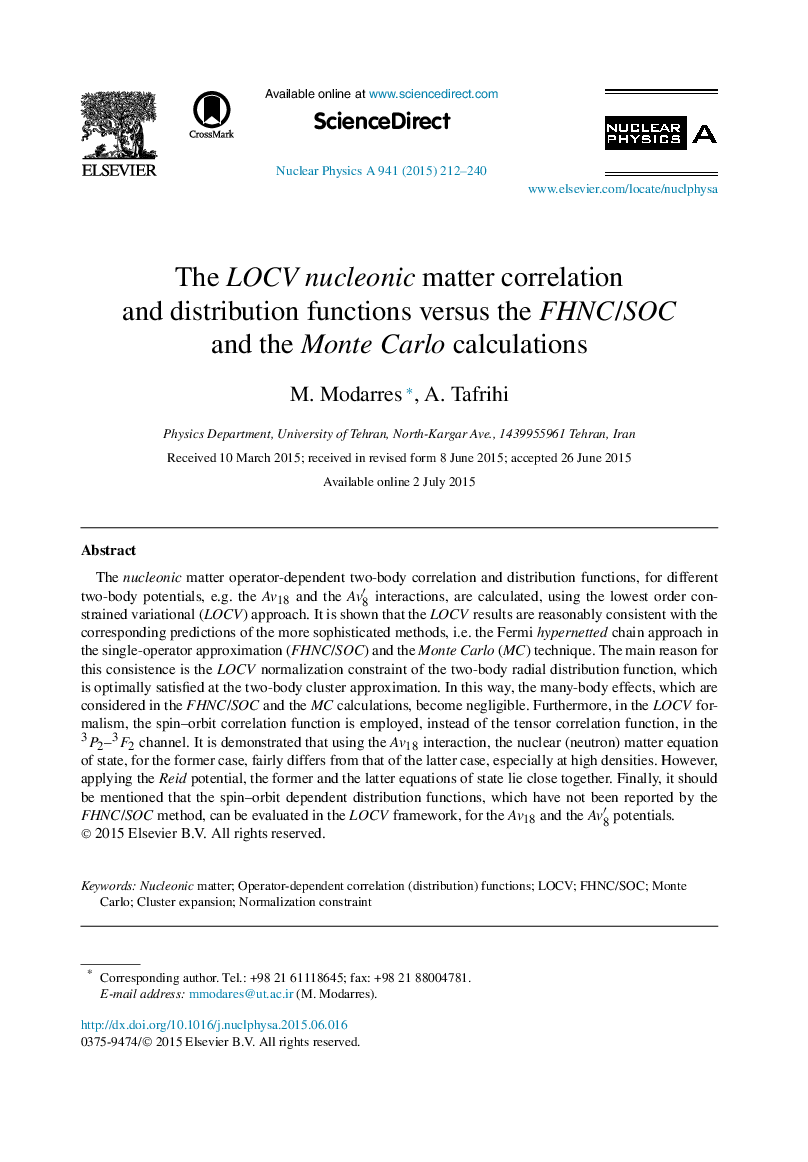| Article ID | Journal | Published Year | Pages | File Type |
|---|---|---|---|---|
| 1836852 | Nuclear Physics A | 2015 | 29 Pages |
Abstract
The nucleonic matter operator-dependent two-body correlation and distribution functions, for different two-body potentials, e.g. the Av18 and the Av8â² interactions, are calculated, using the lowest order constrained variational (LOCV) approach. It is shown that the LOCV results are reasonably consistent with the corresponding predictions of the more sophisticated methods, i.e. the Fermi hypernetted chain approach in the single-operator approximation (FHNC/SOC) and the Monte Carlo (MC) technique. The main reason for this consistence is the LOCV normalization constraint of the two-body radial distribution function, which is optimally satisfied at the two-body cluster approximation. In this way, the many-body effects, which are considered in the FHNC/SOC and the MC calculations, become negligible. Furthermore, in the LOCV formalism, the spin-orbit correlation function is employed, instead of the tensor correlation function, in the P23-F23 channel. It is demonstrated that using the Av18 interaction, the nuclear (neutron) matter equation of state, for the former case, fairly differs from that of the latter case, especially at high densities. However, applying the Reid potential, the former and the latter equations of state lie close together. Finally, it should be mentioned that the spin-orbit dependent distribution functions, which have not been reported by the FHNC/SOC method, can be evaluated in the LOCV framework, for the Av18 and the Av8â² potentials.
Keywords
Related Topics
Physical Sciences and Engineering
Physics and Astronomy
Nuclear and High Energy Physics
Authors
M. Modarres, A. Tafrihi,
